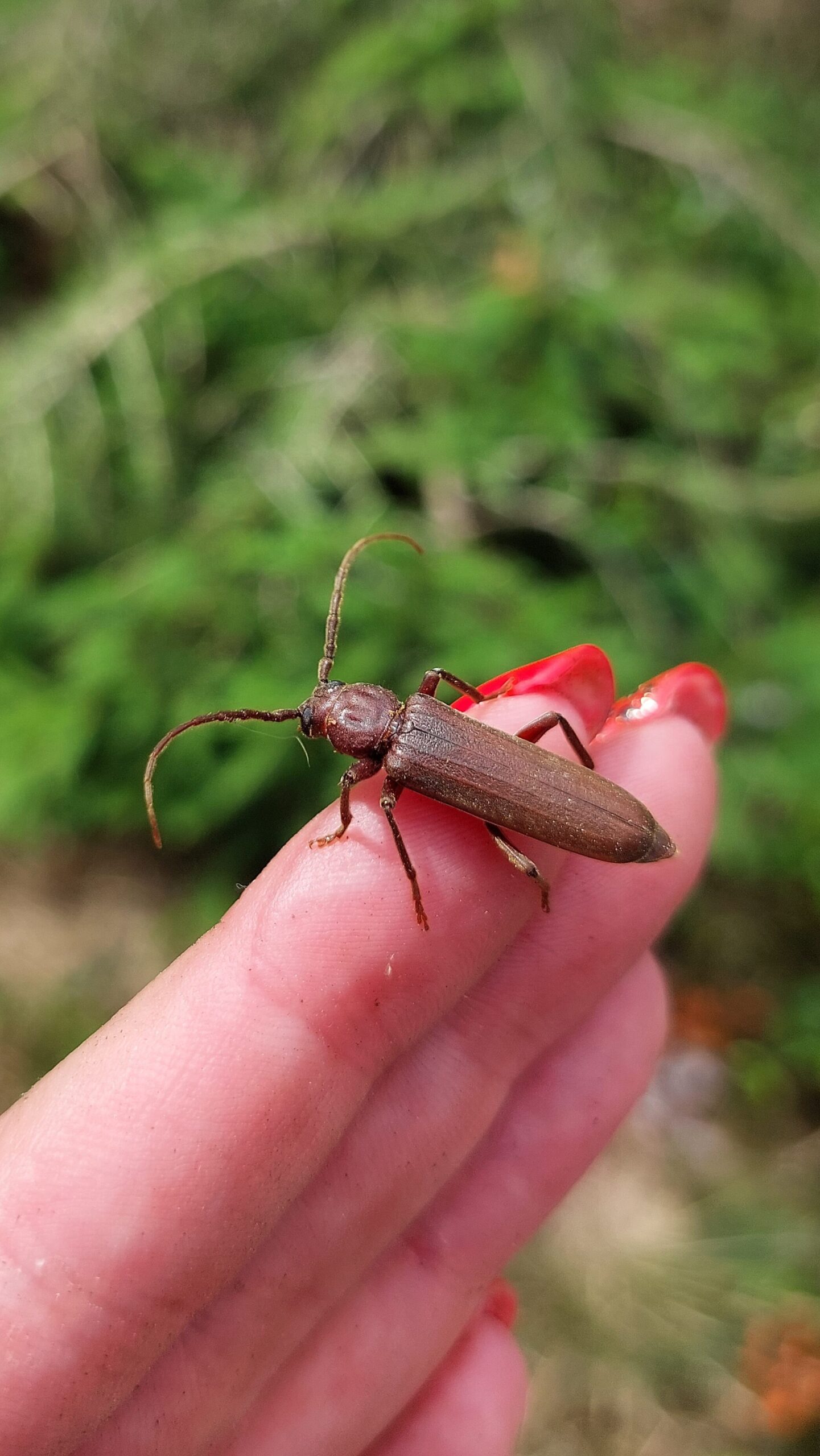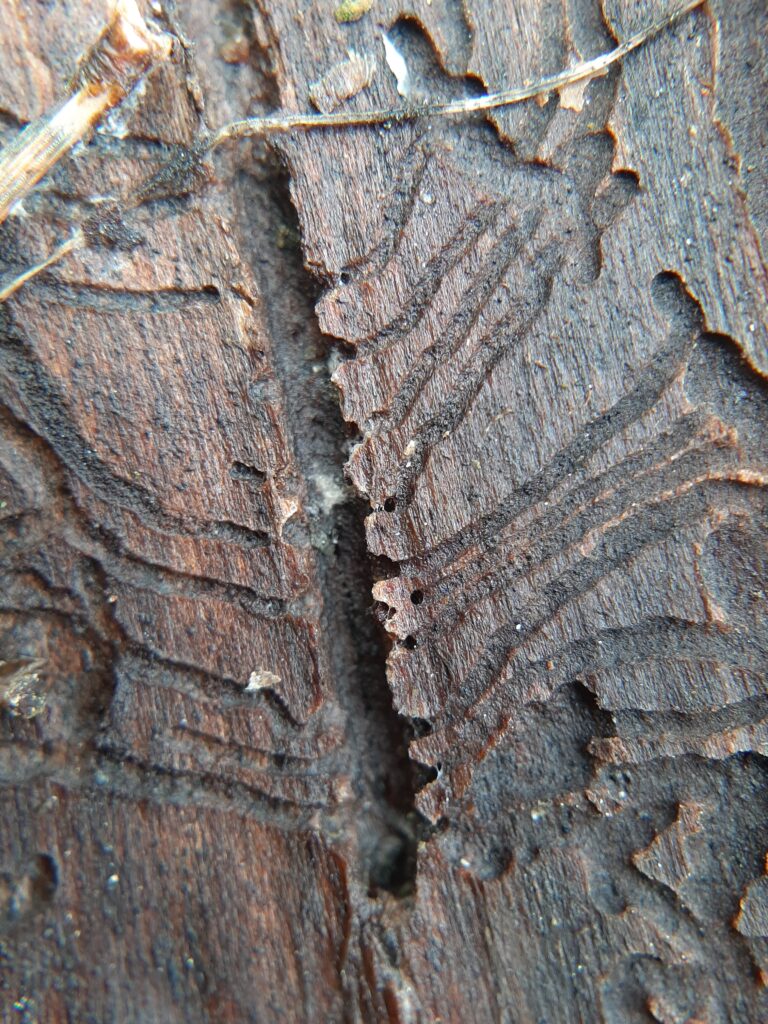
Results from this study indicate that there is a substantial difference in number of species, number of individuals, and species composition of saproxylic beetles between spruces that were left untreated after colonisation of European spruce bark beetles and those that were felled and debarked. Especially in early years after a tree’s death, standing trees with bark contained a few times more species and individuals of beetles than debarked logs. However, the dissimilarity between the types of wood decreases with increasing age of wood. Moreover, presence of the European spruce bark beetle can cause presence of other species that either feed on it or use niches created by it.
Why did I get such results? There are many reasons to that. Debarking can lead to depletion of available food sources not only by disappearance of bark itself, but also by drying of other consumable parts of wood. Wood without bark, which has moisture-maintaining properties, dries out at faster pace, and the dryer and more lignified wood, the harder it is to be consumed and digested by insects of early succession. The age of dead wood also appears to be important regarding the presence of saproxylic beetles due to the changes in the substrate occurring over time. Assemblages of insects (Coleoptera included) tend to change following decay stages of wood. Researchers have shown that when it comes to dead wood of conifers, number of saproxylic beetle species is highest in the early stages of decomposition.

The study provides valuable insights into the ecological consequences of debarking of spruces after bark beetle colonisation, contributing to future research and conservation efforts aimed at preserving biodiversity of saproxylic beetles and other organisms in forests. The study shows that choosing debarking as a method of managing colonised spruce stands shouldn’t be considered by forest managers due to its disadvantageous effect on saproxylic beetle biodiversity. It would be also interesting to follow aging process of the dead wood tested in this study to understand how saproxylic beetle species are affected in the later successional stages of wood decomposition.